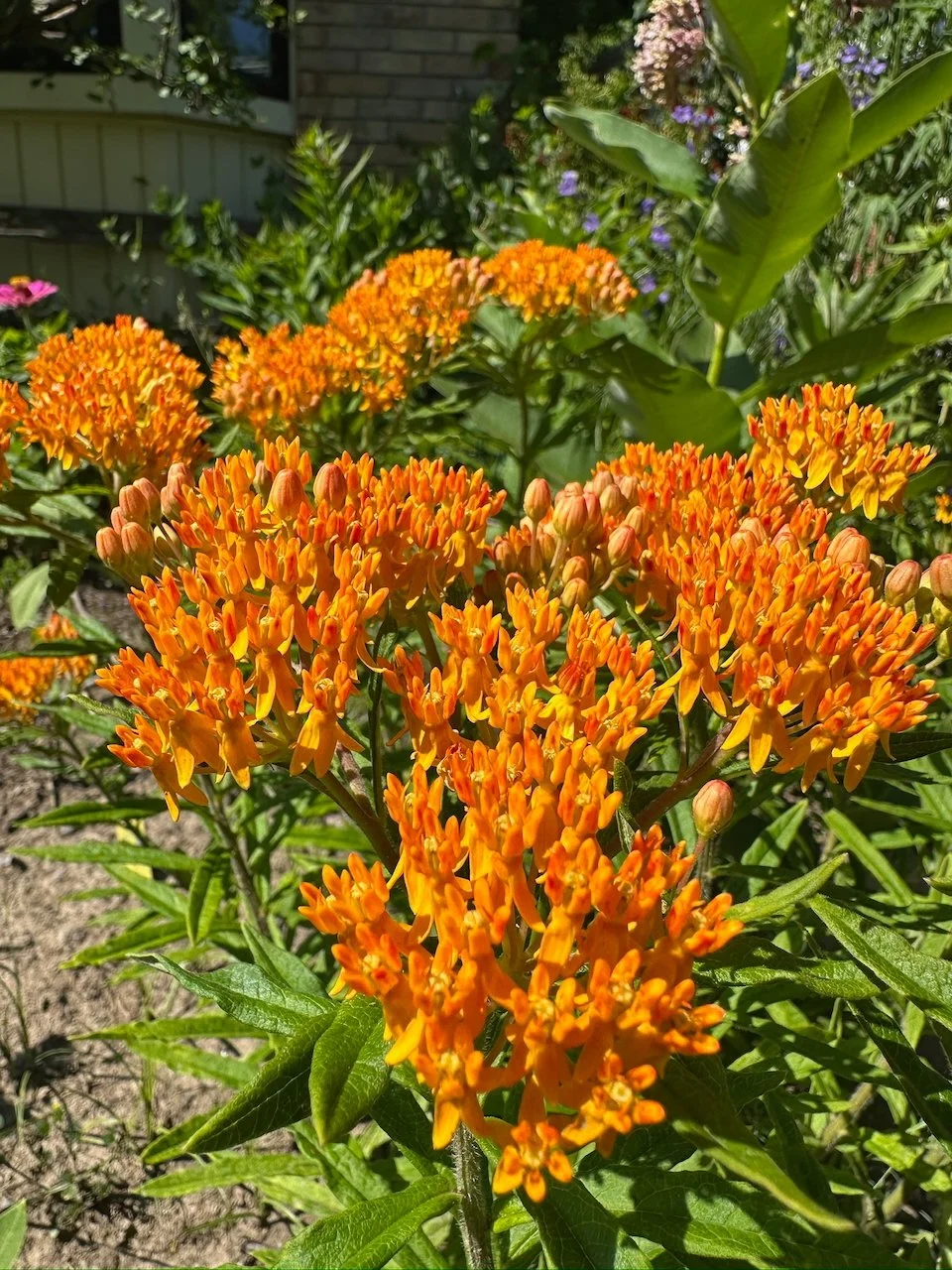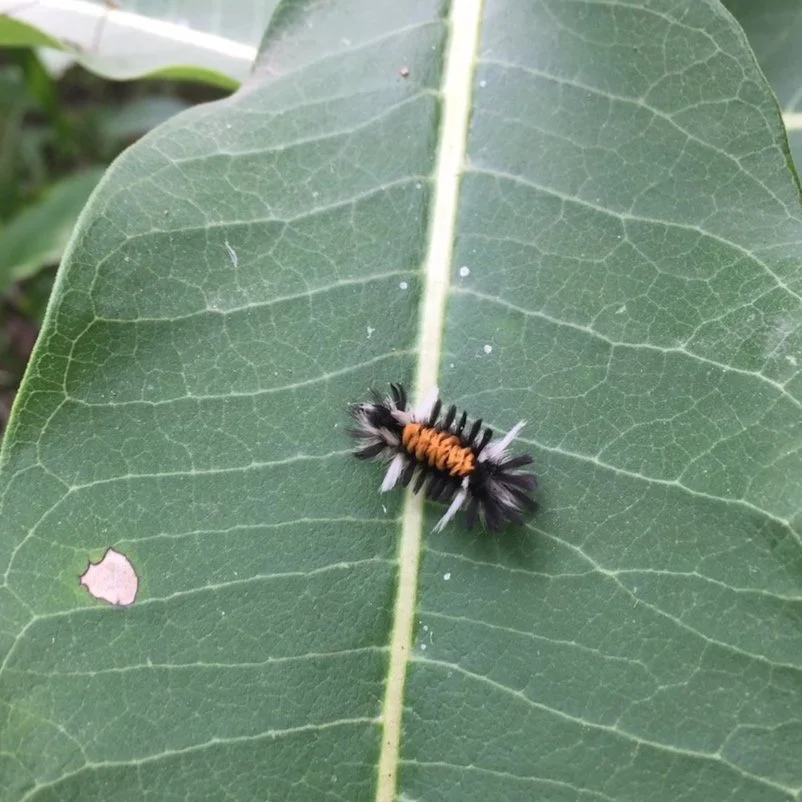Butterfly Milkweed
Butterfly Milkweed (Asclepias tuberosa) - The fiery bloom with roots that run deep and no patience for drama
Hello there, gardener. I’m that bold burst of orange you’ve likely seen glowing along Ontario roadsides and meadows come early summer. Upright, eye-catching, and proud, but never one to cause a fuss.
I’ve earned my spot in your garden by being sturdy, cheerful, and easy to live with. Unlike some of my milkweed relatives (yes, I’m talking about Common Milkweed), I stay politely in place. No underground runners, no surprise sprouts. Just a tidy plant about 2 to 3 feet tall and a couple feet wide. Give me full sun and dry to medium soil, and I’ll be happy.
But I’m not just here to look pretty. Monarchs rely on me to host their caterpillars, and so do Gray Hairstreaks and Milkweed Tussock Moths. My blooms from June to August bring in native bees, butterflies, skippers, moths, beetles, flies, and even predatory insects like assassin bugs. There’s a whole ecosystem that finds something to love here.
I’ve also got some fascinating history. During the Second World War, people used the fluffy floss from my seed pods to stuff life jackets when other materials were scarce. And my deep taproot? It helps prevent erosion and improves the soil where I grow.
I do take a little while to get going. If you sow my seeds in the fall, I’ll need a cold winter and a couple of seasons to settle in before I start blooming. But once I’m comfortable, I’ll return every year, blazing orange and full of life.
If you’re looking for a native perennial that supports wildlife, behaves beautifully, and adds a splash of colour to your garden, I’m ready to make myself at home.



